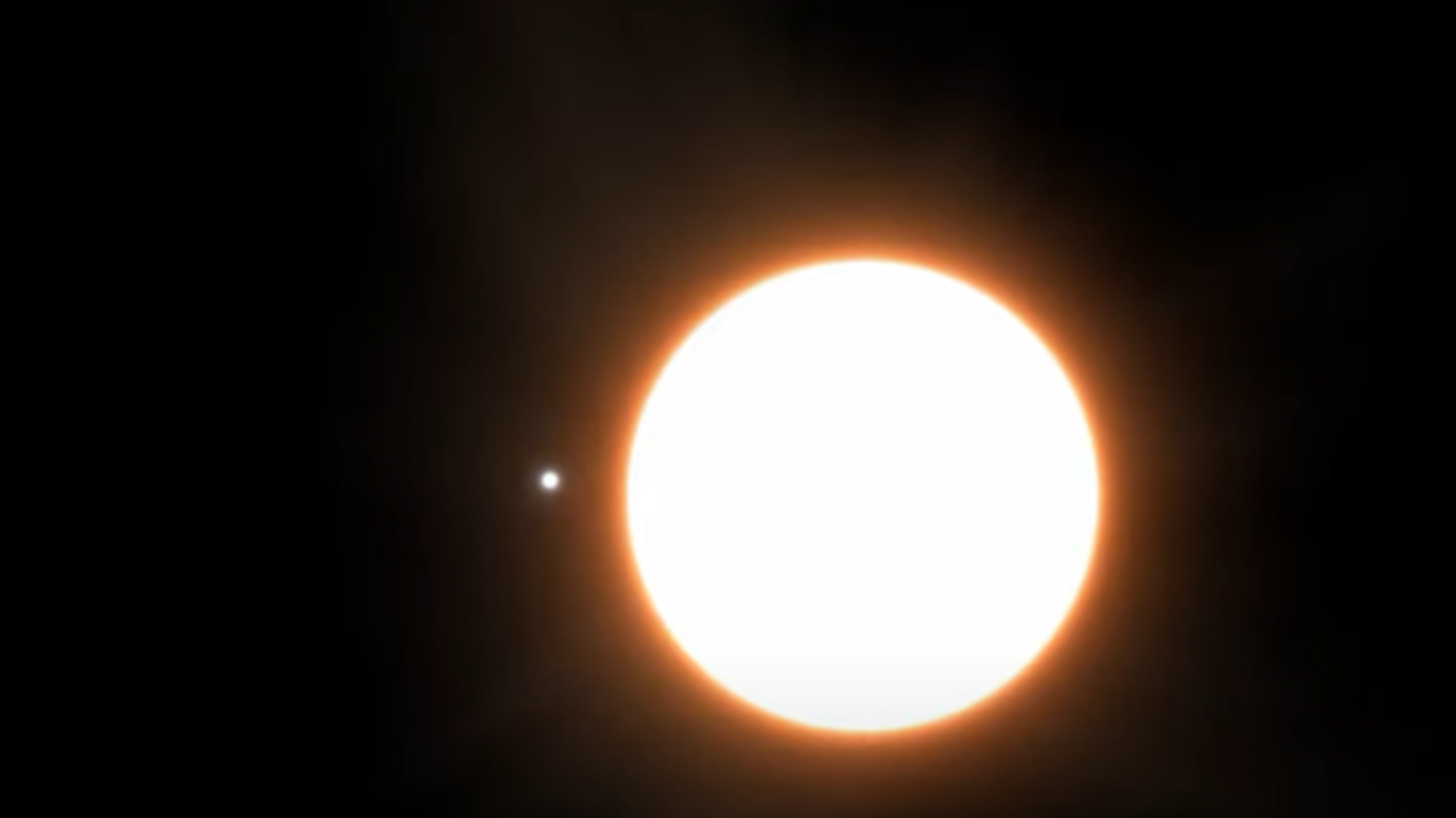https://sputnikglobe.com/20240309/astronomers-discover-exoplanet-with-a-boiling-ocean-1117217054.html
Astronomers Discover Exoplanet With a Boiling Ocean
Astronomers Discover Exoplanet With a Boiling Ocean
Sputnik International
NASA’s James Webb Space Telescope (JWST) has discovered a distant planet that could be entirely covered by water, according to a report published on Friday.
2024-03-09T05:12+0000
2024-03-09T05:12+0000
2024-03-09T05:12+0000
beyond politics
astronomy
science & tech
exoplanet
planet
nasa
institute of astronomy
james webb space telescope (jwst)
university of cambridge
space exploration
https://cdn1.img.sputnikglobe.com/img/07e7/07/0b/1111806225_0:34:612:378_1920x0_80_0_0_ca0fdfc816dc39249dd793b05a37e7df.png
NASA’s James Webb Space Telescope (JWST) has discovered a distant planet that could be entirely covered by water, according to a report published on Friday. The planet was discovered during a quest to identify habitable exoplanets, as Webb’s advanced instruments allow it to conduct detailed analysis of exoplanet atmospheres that may present key, life-sustaining molecules.Through Webb’s observations, it found water vapor and chemical signatures of methane and carbon dioxide in the atmosphere of the exoplanet. Based on these findings, astronomers believe this chemical mixture is consistent with a water world in which a boiling hot “ocean” would cover the entire surface.The absence of ammonia is another reason as to why scientists believe his exoplanet may have an ocean on its surface, even though it should naturally occur in a hydrogen-rich atmosphere, based on chemical principles.Madhusudhan adds that TOI-270 d could be a Hycean planet, which is a particular type of exoplanet that contain hydrogen-rich atmospheres and support large liquid oceans. It was once thought that these Hycean planets could support life, though a recent study suggests that may not be the case, as these planets would suffer from a catastrophic runaway greenhouse effect and could limit their potential to host life.TOI-270 d is also tidally licked, which means one side faces its star—which is a red dwarf—and the other side is bathed in eternal darkness, creating an extreme temperature difference. The planet would also have an atmosphere with tens or hundreds of times the pressure at the Earth’s surface.Astronomers also detected carbon disulphide, which has been linked to biological processes on Earth, though it can be produced in other ways.
https://sputnikglobe.com/20230824/astronomers-detect-dark-spot-on-neptune-for-first-time-using-earth-based-telescope-1112869224.html
Sputnik International
feedback@sputniknews.com
+74956456601
MIA „Rosiya Segodnya“
2024
Mary Manley
https://cdn1.img.sputnikglobe.com/img/07e6/01/0b/1092187887_0:0:2048:2049_100x100_80_0_0_0c2cc4c84f89aff034cc55bb01fb6697.jpg
Mary Manley
https://cdn1.img.sputnikglobe.com/img/07e6/01/0b/1092187887_0:0:2048:2049_100x100_80_0_0_0c2cc4c84f89aff034cc55bb01fb6697.jpg
News
en_EN
Sputnik International
feedback@sputniknews.com
+74956456601
MIA „Rosiya Segodnya“
Sputnik International
feedback@sputniknews.com
+74956456601
MIA „Rosiya Segodnya“
Mary Manley
https://cdn1.img.sputnikglobe.com/img/07e6/01/0b/1092187887_0:0:2048:2049_100x100_80_0_0_0c2cc4c84f89aff034cc55bb01fb6697.jpg
astronomy, science, space, space exploration, distant planet, space water, water in space, planet with water, extraterrestrial life, water planet, living planet, life on the planet
astronomy, science, space, space exploration, distant planet, space water, water in space, planet with water, extraterrestrial life, water planet, living planet, life on the planet
Astronomers Discover Exoplanet With a Boiling Ocean
The exoplanet, known as TOI-270 d, was described by NASA as a Neptune-like exoplanet with a mass that is a little over 4.5 Earths. This exoplanet, which was discovered in 2019, takes 11.4 days to complete one orbit around its star and is about 70 light years away.
NASA’s James Webb Space Telescope (JWST) has discovered a distant planet that could be entirely covered by water, according to a
report published on Friday. The planet was discovered during a quest to identify habitable exoplanets, as Webb’s advanced instruments allow it to conduct detailed analysis of exoplanet atmospheres that may present key, life-sustaining molecules.
Through Webb’s observations, it found water vapor and chemical signatures of methane and carbon dioxide in the atmosphere of the exoplanet. Based on these findings, astronomers believe this chemical mixture is consistent with a water world in which a boiling hot “ocean” would cover the entire surface.
“The ocean could be upwards of 100 degrees Celsius [212 degrees Fahrenheit] or more,” said Professor of Astrophysics and Exoplanetary Science Nikku Madhusudhan of the Institute of Astronomy at the University of Cambridge, who led the analysis. He adds that an ocean this hot could still be liquid due to the high atmospheric pressure, but it isn’t clear whether or not the planet would be habitable.
The absence of ammonia is another reason as to why scientists believe his exoplanet may have an ocean on its surface, even though it should naturally occur in a hydrogen-rich atmosphere, based on chemical principles.
Madhusudhan adds that TOI-270 d could be a Hycean planet, which is a particular type of exoplanet that contain hydrogen-rich atmospheres and support large liquid oceans. It was once thought that these Hycean planets could support life, though a recent study suggests that may not be the case, as these planets would suffer from a catastrophic runaway greenhouse effect and could limit their potential to host life. TOI-270 d is also tidally licked, which means one side faces its star—which is a red dwarf—and the other side is bathed in eternal darkness, creating an extreme temperature difference. The planet would also have an atmosphere with tens or hundreds of times the pressure at the Earth’s surface.
“The ocean would be extremely hot on the day side. The night side could potentially host habitable conditions,” said Madhusudhan. “We need to be extremely careful about how we communicate findings on this kind of object,” he added. “It’s easy for the public to jump on to the idea that we’re finding life already.”
Astronomers also detected carbon disulphide, which has been linked to biological processes on Earth, though it can be produced in other ways.
“We can’t tie [carbon disulphide] to biological activity,” said Madhusudhan. “In a hydrogen-rich atmosphere, it is relatively easy to make it. But if we’re able to measure the unique molecule it’s promising that we should be able to measure habitable planets in the future.

24 August 2023, 21:09 GMT






